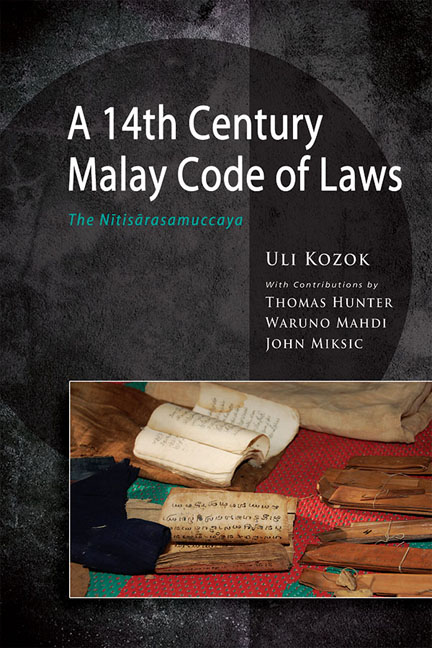Book contents
- Frontmatter
- Contents
- List of Tables
- List of Figures
- Abbreviations
- Preface
- About the Contributors
- 1 Pusaka: Kerinci Manuscripts
- 2 Kerinci and the Ancient History of Jambi
- 3 Tanjung Tanah Manuscript TK 214
- 4 Script and Language of the Tanjung Tanah Manuscript
- 5 Tanjung Tanah Manuscript TK 215
- 6 Sanskrit in a Distant Land: The Sanskritized Sections
- Bibliography
- Index
- Nalanda-Sriwijaya Series
- Images of TK 214
3 - Tanjung Tanah Manuscript TK 214
Published online by Cambridge University Press: 19 May 2017
- Frontmatter
- Contents
- List of Tables
- List of Figures
- Abbreviations
- Preface
- About the Contributors
- 1 Pusaka: Kerinci Manuscripts
- 2 Kerinci and the Ancient History of Jambi
- 3 Tanjung Tanah Manuscript TK 214
- 4 Script and Language of the Tanjung Tanah Manuscript
- 5 Tanjung Tanah Manuscript TK 215
- 6 Sanskrit in a Distant Land: The Sanskritized Sections
- Bibliography
- Index
- Nalanda-Sriwijaya Series
- Images of TK 214
Summary
DISCOVERY
In his function as taalambtenaar (language official) for Sumatra, the Dutch scholar, Petrus Voorhoeve, visited the Sumatran regency of Kerinci in April, and again in July 1941 to survey the Kerinci documents held by the people as sacred heirlooms in private collections. During the first visit, he made a list of 183 items — published only in 1970 — and during the second visit, he copied and transliterated a large amount of manuscripts while others were photographed to be transliterated later. The primary school teacher Abdul Hamid from the school Kota Payang 1 accompanied Voorhoeve to Kabanjahe where he helped to complete and type the transliterations. In the middle of August 1941, he returned to Kerinci, taking with him the new list, which now comprised 252 items, and completed transliterations of about half the texts. By the time Voorhoeve was called up for military service on 8 December 1941, he had completed nearly all transliterations. His secretary made six copies, two of which were sent to Kerinci, one for the Controleur's office in Kerinci, and one for the owners of the manuscripts. “I do not know whether these copies ever reached their destination before the Japanese invasion; those sent to Batavia certainly did not arrive there. Not a single of the transliterations was found after the war”, he wrote in an article entitled “Kerintji Documents” (Voorhoeve 1970, p. 371). A small number of photographs and a few copies made by hand are all that survived; these are now kept in the library of the KITLV in Leiden.
Five years after Voorhoeve wrote his “Kerintji Documents”, the British anthropologist C.W. Watson conducted fieldwork in Kerinci. Armed with Voorhoeve's list of 183 items, he went to a number of villages and tried to persuade the clan or lineage heads to let him see the documents. As a result he was able to transliterate a number of manuscripts with the assistance of Iskandar Zakariah — the same person who now, more than thirty years later, assists me in documenting the sacred heirloom of the people of Kerinci.
- Type
- Chapter
- Information
- A 14th Century Malay Code of LawsThe Nitisarasamuccaya, pp. 50 - 161Publisher: ISEAS–Yusof Ishak InstitutePrint publication year: 2015

